Engineering Plastics: A Comprehensive Guide to Properties, Applications, and Modified
Next, I will introduce the main characteristics, types, and application fields of engineering plastics, as well as the additives and functions of modified engineering plastics. Now let’s start!

The main characteristics of engineering plastics
- 1. Lightweight and low relative density.
The relative density of engineering plastics is generally between 1.0 and 2.0, which is much lower than that of metals. Light in weight, it can replace some traditional metal materials and be used in aerospace vehicles, vehicles and other fields. - 2. High specific strength.
By reinforcing with glass fiber, carbon fiber, and other fibers, significant improvement in tensile strength can be achieved. The ratio of tensile strength to relative density typically falls in the range of 1500-1700, with values as high as 4000 (in contrast to steel at 1600 and aluminum at 1500). Tensile strength refers to the stress at which the material undergoes maximum uniform plastic deformation. The tensile strength is determined by subjecting a sample to a tensile test, and the maximum tensile stress endured by the sample until it ruptures is recorded as the tensile strength, expressed in MPa. - 3. Outstanding wear resistance and self-lubricating properties.
Using engineering plastics as friction parts, compared with wear-resistant metal alloys, the wear rate is lower than 1:5, and fluorine plastics are better. - 4. Excellent mechanical properties.
In a wide temperature range, many engineering plastics, especially reinforced engineering plastics, have excellent impact resistance and fatigue resistance. - 5. Excellent electrical insulation.
Almost all engineering plastics have excellent electrical insulation and arc resistance characteristics, and can be among the ranks of excellent insulating materials. - 6. Chemical stability.
It has good corrosion resistance to acids, alkalis and general organic solvents. - 7. Good dimensional stability of parts.
- 8. High heat resistance.
When general engineering plastics are reinforced with different glass fibers, the UL long-term continuous use temperature exceeds 100°C, and the index of special engineering plastics generally exceeds 150°C. - 9. Excellent shock absorption, noise reduction and burying of foreign objects.
When engineering plastics are used as moving parts, there is no noise of metal impact, and they have excellent shock absorption and noise reduction performance. For conditions where abrasive particles are present, foreign objects can be buried, unlike metals that may seize or scratch before. - 10. Good processing performance.
Engineering plastics can be processed at lower temperatures (usually below 400°C) by injection moulding, extrusion, blow moulding, etc. The products can be reprocessed by mechanical methods, with stable dimensions, strong interchangeability of finished products, and low mould costs. Compared with metal processing, it can save about 50% of energy consumption, shorten working hours and high yields.
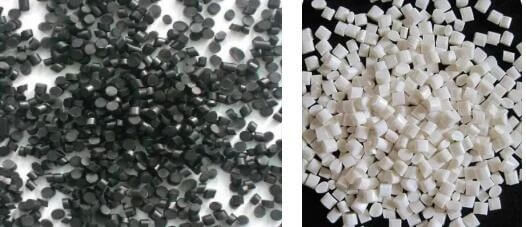
Commonly used five types of engineering plastics
The types of engineering plastics are commonly used in the five major engineering plastics such as polycarbonate, polyoxymethylene, polyamide, thermoplastic polyester, and modified polyphenylene ether.
Polyamide
Nylon, also known as PA, has gained widespread attention due to its unique properties such as low specific gravity, high tensile strength, wear resistance, good self-lubrication, excellent impact toughness, as well as rigidity and flexibility. Moreover, it is highly efficient and easy to process. With its light-specific gravity, which is only 1/7th of that of metal, nylon can be processed into various products, making it a popular substitute for metal in the automobile and transportation industry. Commonly produced nylon products in this industry include pump impellers, fan blades, valve seats, bushings, bearings, various instrument panels, automotive electrical instruments, hot and cold air control valves, and other parts. On average, 3.6-4 kg of nylon products are used per car. The consumption of polyamides in the automotive industry is the largest, followed by electrical and electronic products.
Polycarbonate
Polycarbonate (PC) possesses not only strength comparable to non-ferrous metals but also ductility and toughness. Its impact strength is extremely high, rendering it impervious to hammering and explosion of the TV screen. Furthermore, polycarbonate exhibits exceptional transparency and can be colored in a multitude of ways. Due to these aforementioned properties, polycarbonate has found wide-ranging applications in various safety lampshades, signal lights, transparent protective panels for stadiums and stadiums, lighting glass, high-rise building glass, automotive reflectors, windshield panels, aircraft cockpit glass, motorcycles, and car driving helmets. The computer industry, office equipment, automobiles, replacement glass and sheets, and CD and DVD discs represent the largest markets for polycarbonate, with the latter being one of the most promising markets.
POM
Polyoxymethylene (POM), also known as “Duracon” and “Super Steel” abroad, is an engineering plastic renowned for its exceptional performance. Possessing a hardness, strength, and rigidity similar to that of metal, POM exhibits excellent self-lubricating properties, fatigue resistance, and elasticity across a wide range of temperature and humidity. Additionally, it boasts remarkable chemical resistance. POM is rapidly gaining popularity as a substitute for metals in several markets due to its lower cost and exceptional properties, such as replacing zinc, brass, aluminum, and steel in the production of various components. Since its introduction, POM has found extensive usage in several fields, including electrical and electronics, mechanical, instruments, daily light industry, automobiles, building materials, agriculture, and others. Moreover, POM is experiencing significant growth in new areas such as medical technology and sports equipment applications.
Polybutylene terephthalate
PBT, which stands for polybutylene terephthalate, is a type of thermoplastic polyester. When compared to other thermoplastic engineering plastics, non-reinforced PBT exhibits superior electrical properties and processability. PBT has a low glass transition temperature and is capable of rapid crystallization at mold temperatures as low as 50°C, resulting in a short processing cycle. PBT finds extensive use in the automotive, electrical, and electronics industries owing to its high insulation and temperature resistance. PBT is ideal for applications such as flyback transformers for televisions, automotive distributors and ignition coils, bases and shells for office equipment, various exterior components for automobiles, air conditioner fans, electronic stove bases, equipment cases, and more.
Polyphenylene ether
PPO, an acronym for Polyphenylene Oxide, exhibits exceptional resistance to water and steam, and its products demonstrate high tensile and impact strength as well as good creep resistance. Moreover, it exhibits outstanding wear resistance and electrical properties. PPO finds extensive usage as a replacement for stainless steel in the fabrication of surgical medical instruments. It is also employed in the electromechanical industry for manufacturing gears, blower blades, pipes, valves, screws, and other fasteners and connections. Furthermore, PPO is used for producing components in the electronics and electrical industries, such as coil skeletons and printed circuit boards.
Application fields of engineering plastics
- 1. The application of engineering plastics in the automotive field is also increasing, mainly for bumpers, fenders, fuel tanks, instrument panels and other interiors, body panels, doors, lampshades, fuel pipes, radiators and engine-related parts.
- 2. Engineering plastics find a broad range of applications in the machinery industry, from mechanical components like bearings, gears, screw nuts, and seals to structural parts like housings, covers, handwheels, handles, fasteners, and pipe joints.
- 3. Engineering plastics find wide-ranging applications in the electronic appliance industry, serving as insulating materials for wire and cable coating, printed circuit boards, insulating films, and structural components of electrical equipment.
- 4. Engineering plastics find a wide range of applications in household appliances such as refrigerators, washing machines, air conditioners, televisions, electric fans, vacuum cleaners, electric irons, microwave ovens, rice cookers, radios, combined audio equipment, and lighting appliances.
- 5. Engineering plastics are utilized in various applications within the chemical industry, including but not limited to heat exchangers, chemical equipment linings, pipes, fittings, valves, and pumps for chemical pipelines.
- 6. In the field of construction, engineering plastics are also used in floors, wallpapers, ceilings, wall panels, corridors, pipes, etc.
Modification additives in engineering plastics and their functions
Modified engineering plastics are high-performance thermoplastics that have been modified with additives to enhance their mechanical, thermal, electrical or chemical properties. These plastics have many applications in the injection molding industry for the manufacture of high-performance components.
Additives such as glass fibers, carbon fibers and mineral fillers are commonly used to increase the strength, stiffness and dimensional stability of plastics. Other additives such as flame retardants, UV stabilizers and antistatic agents are used to increase the resistance of plastics to environmental factors.
Some common modified engineering plastics used in injection molding include acrylonitrile butadiene styrene (ABS), polycarbonate (PC) and polyphenylene oxide (PPO). These plastics are used to produce a wide range of products such as automotive parts, electronic components and consumer goods.
Plasticizer
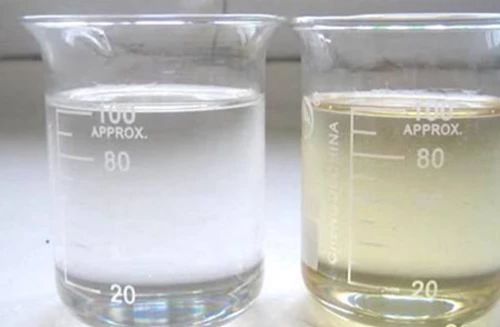
Some plastics with high glass transition temperature need to add a certain amount of plasticizer in order to produce soft products at room temperature and improve the melt flow properties during processing. These small molecular-weight oily plasticizers have good compatibility with polymers. They are distributed between polymer chains, reducing the force between them, so that it is easy to move the molecular chains under a certain temperature and pressure. To achieve the purpose of processing and forming. Therefore, plasticizers can reduce the glass transition temperature and minimum molding temperature of plastics. Usually, the glass transition temperature decrease is directly proportional to the volume fraction of the plasticizer.
Plasticizers can be divided into two categories: main plasticizers and secondary plasticizers: the main plasticizers are characterized by good compatibility with resins, high plasticizing efficiency, migration resistance, low volatility, and low Oil (water) extractability, low-temperature flexibility. The sub-plasticizer has poor compatibility and is mainly used together with the main plasticizer to reduce costs, so it is also called an extender.
Stabilizer
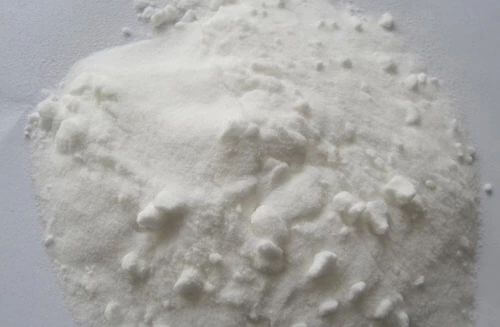
It is common knowledge that plastic products undergo fading, embrittlement, and cracking when exposed to light, heat, and oxygen during processing, storage, and use. To delay and prevent ageing phenomena, stabilizers must be incorporated. Heat stabilizers are primarily used to prevent heat ageing, antioxidants are mainly used to prevent oxidative ageing, and light stabilizers are used to prevent light ageing. All of these are referred to collectively as stabilizers.
Currently, the most high-performing plastic stabilizer available is the methyl tin heat stabilizer, also known as “181”. It proves to be exceptionally effective in a range of applications, including calendering, extrusion molding, injection molding, and blow molding of rigid polyethylene (PVC). Due to its exceptional safety record, it is particularly popular for use in the production of food packaging and high-definition rigid polyethylene products. Additionally, it is increasingly used in plastic doors and windows, water supply pipes, and decorative materials as a substitute for other highly toxic heat stabilizers. The methyl tin heat stabilizer is widely used in the United States, Europe, and Japan, and it has gained popularity in China over recent years.
Flame retardant
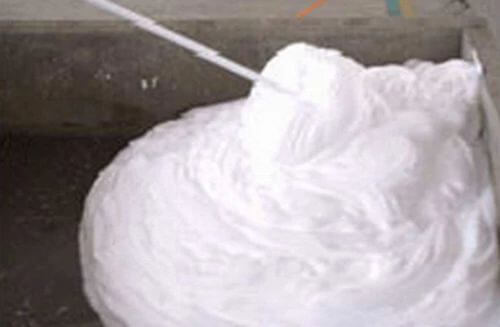
Flame retardants are additives that can reduce the burning speed of plastics. They can be categorized into four types based on their mechanisms for flame retardancy.
- (1) Combined with the decomposition products of plastics to produce a smoldering gas, such as antimony trioxide reacting with hydrogen chloride released when PVC decomposes, that is, antimony trichloride oxychloride with flame-extinguishing effect.
- (2) Absorb the heat generated during combustion to cool the plastic to slow down the burning rate such as aluminum hydroxide, which is the most common type of flame retardant: it acts as a filler, smoke suppressant, and flame retardant At the same time, it is cheap and has little impact on polymer properties, so its growth rate of application is remarkable.
- (3) Provide a coating that is isolated from oxygen, such as phosphate esters. The main products are tricresyl phosphate, etc., which are actually a plasticizer with flame retardant properties.
- (4) It can produce free radicals that prevent combustion reactions, and these free radicals can react with plastics to produce products with poor combustion performance.
Foaming agent
Organic compounds known as blowing agents decompose and emit gases when subjected to heat. These gases remain trapped in the plastic substrate, creating numerous small foam structures and resulting in foamed plastics. As a good foaming agent, it should meet the following conditions: release gas in a short time, the gas release speed can be adjusted, the gas released by decomposition should be an inert gas such as CO2, N2, easy to disperse and decompose in plastics, and the decomposition temperature Appropriate, the heat generated during decomposition is not large, the decomposition reaction is irreversible, and the blowing agent is non-toxic. The most widely used blowing agent is azodicarbonamide.
Coupling agent
A coupling agent is a type of substance that can enhance the interfacial properties between polymer materials and fillers. Typically, a coupling agent comprises two functional groups within its molecular structure: one group can chemically react with the polymer matrix or have better compatibility with it. In contrast, the other group can form chemical bonds with the inorganic filler. For example, a silane coupling agent has a general formula of RSiX3, where R is an active functional group that exhibits affinity and reactivity with polymer molecules (such as vinyl, chloropropyl, epoxy, methacrylate, amine, or mercapto), and X is an alkoxy group that can undergo hydrolysis (such as methoxy, ethoxy, etc.).
After the reinforcing agent or filler is treated with a coupling agent, a chemical modification can be obtained on the surface, and a bridge bond is formed between the dispersed inorganic phase and the continuous polymer, which becomes a composite material and improves the strength of the reinforcing agent. Or the role of fillers, organosilane is the most widely used coupling agent, and organic titanate is a more efficient coupling agent.
Crosslinking agent
Polymer materials such as rubber and thermosetting resins typically require crosslinking agents. The low strength and lack of elasticity in linear polymer structures can cause them to break easily. Crosslinking agents serve the function of creating chemical bonds between linear molecules, resulting in a network structure that connects them. This enhances the strength and elasticity of the rubber. Sulfur is the primary crosslinking agent used in rubber, and accelerators are often added. Organic peroxides, such as dicumyl peroxide, are commonly used as crosslinking agents for polyethylene.
Nucleating agent
The nucleating agent is suitable for incompletely crystalline plastics such as polyethylene and polypropylene. By changing the crystallization behavior of the resin, it can accelerate the crystallization rate, increase the crystallization density, and promote the miniaturization of the grain size, so as to shorten the molding cycle, improve the transparency of the product, and the surface New functional additives for physical and mechanical properties such as gloss, tensile strength, rigidity, heat distortion temperature, impact resistance, and creep resistance.
Reinforcing materials and fillers
In many plastics, reinforcing materials and fillers occupy a considerable proportion, especially reinforced plastics and calcium plastic materials. The main purpose is: in order to improve the strength and rigidity of plastic products, various fiber materials or inorganic substances are generally added. The reinforcing materials that are frequently utilized include glass fiber, asbestos, quartz, carbon black, silicate, calcium carbonate, metal oxide, and others.
Lubricant
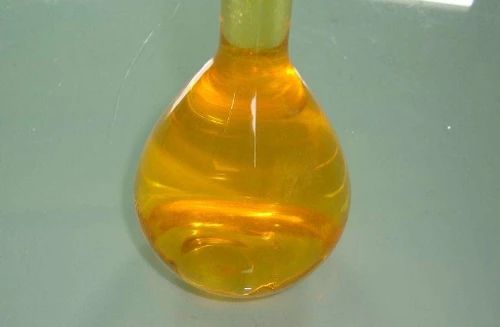
When processing polymers thermally, it is frequently necessary to incorporate a small quantity of lubricant to facilitate easy demolding. Lubricants can be divided into two types: external lubricants and internal lubricants. The main function of the external lubricant is to make the polymer melt leave the hot metal surface of the processing equipment smoothly and facilitate its flow. The compatibility between the external lubricant and the polymer is poor, and only a thin film is formed at the interface between the polymer and the metal. Thin lubricant layer. The polymer exhibits improved flow and reduced internal friction heat-induced temperature rise when aided by an internal lubricant that is highly compatible with it. This compatibility helps to decrease the cohesion between the polymer molecules. External lubricants, such as stearic acid and its metal salts, are widely used. Internal lubricants, on the other hand, are typically low molecular weight polyethylene.
Release agent
The release agent serves as a functional substance between the mold and the finished product. Mold release agents are designed to withstand chemical exposure and remain undissolved when they come into contact with different resin compositions, particularly styrene and amines. Additionally, these agents exhibit heat and stress resistance and are resistant to wear and decomposition. The release agent adheres to the mold and does not transfer to the workpiece being processed, and does not interfere with secondary processing operations such as painting. With the rapid advancement of injection molding, extrusion, calendering, molding, lamination, and other manufacturing processes, the demand for release agents has significantly increased.
Colorant
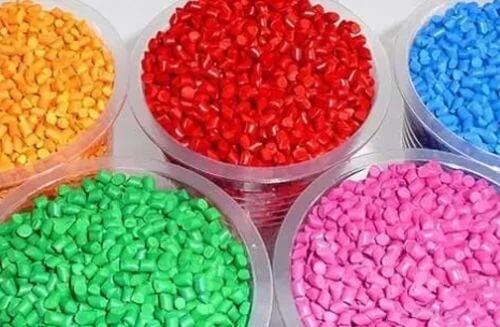
Colorants are generally insoluble in common solvent chemicals. To achieve optimal coloring performance, mechanical methods must be employed to ensure the pigments are uniformly dispersed throughout the plastic. Inorganic pigments have excellent thermal stability and light stability and low price, but relatively poor coloring power and high relative density; organic pigments have high coloring power, bright color, complete color spectrum, and low relative density. The inorganic pigments possess superior properties such as heat resistance, weather resistance, and covering strength, which are not as good as those exhibited by organic pigments.Colourants mainly include masterbatches and fluorescent whitening agents.
Masterbatch
Masterbatch consists of uniformly loaded super-normal pigments or dyes in a resin aggregate. Its fundamental composition comprises pigment or dye, carrier, dispersant, and additive. Masterbatch offers several benefits such as maintaining the chemical and color stability of the pigment, enhancing its dispersibility, and being easy to operate. Additionally, it facilitates color change, ensures a clean environment, and saves time and raw materials.
Fluorescent whitening agent
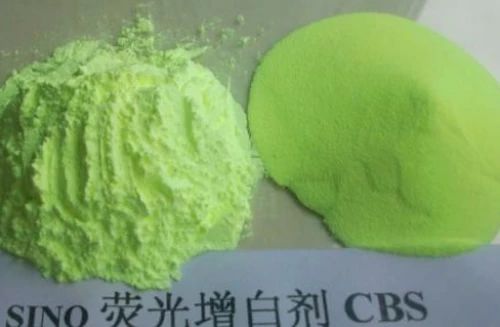
The fluorescent whitening agent is a complex organic compound that belongs to the fluorescent or white dye category. It possesses a unique quality of exciting incident light to produce fluorescence, thus creating a sparkling effect on the dyed substance similar to that of fluorite. This effect gives a bright white appearance to the material, which is easily noticeable to the naked eye. According to the parent classification of fluorescent whitening agents, they can be roughly divided into carbocycles, triazinylamino stilbenes, stilbene-triazoles, benzoxazoles, furans, benzofurans and benzene Nine categories including imidazoles, 1,3-diphenyl-pyrazolines, coumarins, naphthalimides and miscellaneous.
Antistatic agent
Antistatic agents play the role of eliminating or reducing static electricity on the surface of plastic products. Due to their limited compatibility with synthetic resins, most antistatic agents are electrolytes that migrate to the plastic surface in order to absorb moisture and eliminate static electricity.
Antibacterial agent
With the continuous enhancement of people’s safety awareness, more and more people start to buy antibacterial plastic products. Antibacterial agents are used in antibacterial plastics. Antimicrobial agents are chemical substances that can inhibit the growth or reproduction of specific microorganisms, including bacteria, fungi, yeast, algae, viruses, and other microorganisms, for a certain period of time. Antimicrobials are substances that have bacteriostatic and bactericidal properties.
Summary- Manufacturing Case Study
We have rich experience in injection molding of plastic products, you can go to the gallery of plastic parts we have made. In addition, we have manufacturing cases of customized plastic parts in multiple application fields, one of which is the case of using modified engineering plastics (PP+nylon) to make automotive expansion tanks. Hopefully these will give you more insight into plastic product manufacturing services.
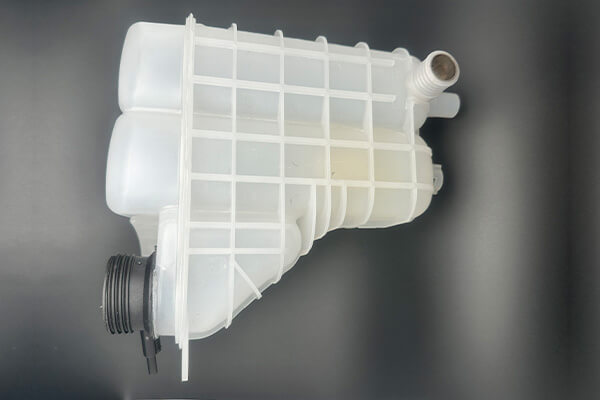
If you need to make your products with engineering plastics and are looking for high-quality custom plastic product services, we are your worthy partner. Our team of experts has the knowledge and experience you need to provide you with quality parts that meet your specific requirements. Whether you need plastic prototyping or large-scale injection molding production, we can help you get the job done. To discover more about our services and how we can assist you in accomplishing your objectives, get in touch with us today.
About Sungplastic
Sungplastic is a plastic product manufacturer with rich experience in injection molding. According to the different product development requirements, we flexibly adjust the manufacturing process to achieve high quality, high efficiency and more economical.
We offer a variety of manufacturing services: Rapid Prototyping, Tool Making, Injection Molding, Product Design and Development, CNC Machining and Metal Stamping. You can choose from a variety of plastics, silicone rubber, or metal for your product. Regardless of mass production or small batch customization, Sungplastic has always been committed to providing assured, efficient and more economical one-stop processing services for your projects.
Contact us for a free quote and project review.
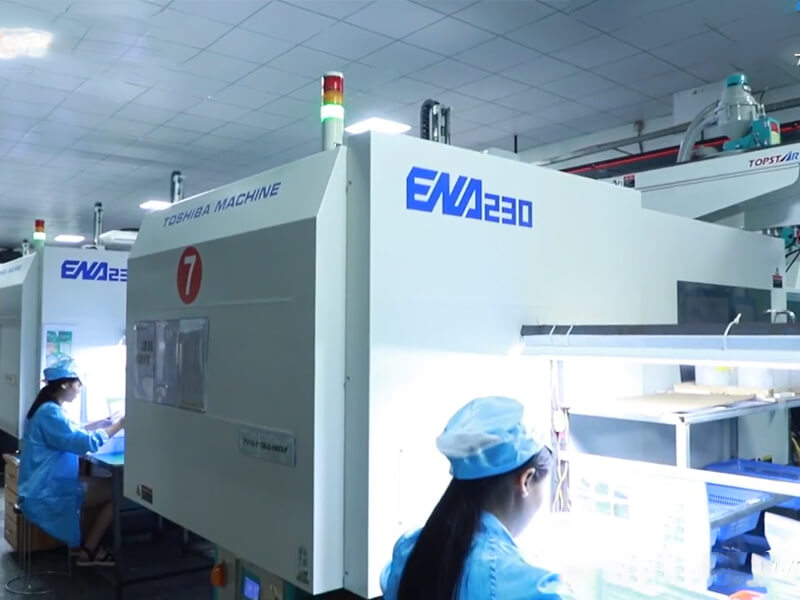
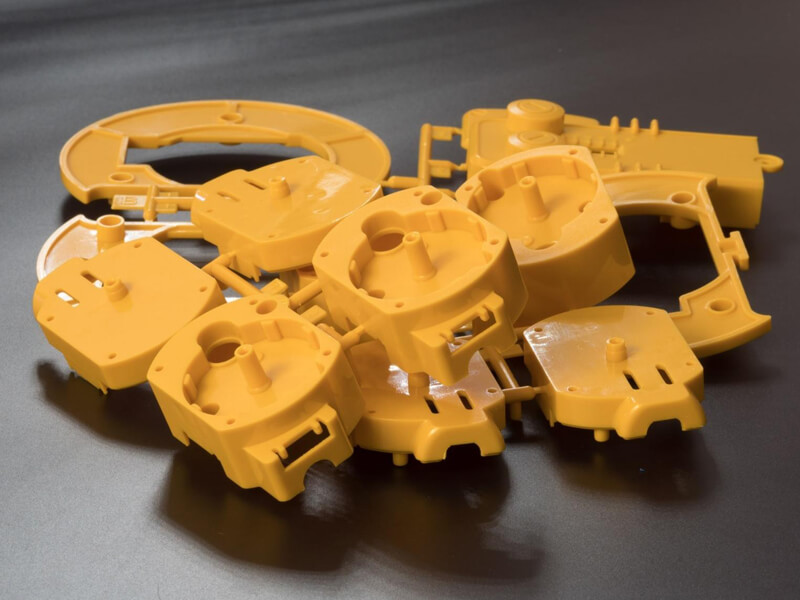
Get a free quote and design analysis today.
We’ll reply to you within 6 working hours.
We respect your privacy.
+86 139 2927 4777 (WhatsApp, Wechat)
